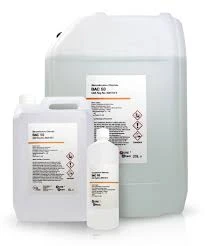Synthesis and Applications of Hydroxy Ethylidene Diphosphonic Acid in Industry
A Comprehensive Overview of 1-Hydroxyethylidene-1,1-Diphosphonic Acid (HEDP)
1-Hydroxyethylidene-1,1-diphosphonic acid (HEDP) is a phosphonate compound that has gained significant recognition in various industries due to its chelating and scale-inhibiting properties. As a member of the class of organic phosphonic acids, HEDP has found applications across diverse fields, including water treatment, metal processing, and agriculture. This article aims to delve into the characteristics, applications, and the environmental implications of HEDP.
Chemical Structure and Properties
HEDP is characterized by its unique molecular structure, which features two phosphonic acid groups attached to a hydroxyethylidene backbone. This configuration allows HEDP to effectively chelate metal ions, forming stable complexes that prevent scale formation in various processes. The compound is soluble in water and possesses a low vapor pressure, making it stable under ordinary conditions.
Applications in Water Treatment
One of the primary applications of HEDP is in water treatment. It is widely used as a scale inhibitor in industrial cooling systems, boilers, and reverse osmosis systems. When dissolved in water, HEDP interacts with calcium, magnesium, and other hardness ions, forming soluble complexes that inhibit the precipitation of scale deposits. This not only improves the efficiency of water treatment processes but also extends the lifespan of the equipment.
In addition to its role as a scale inhibitor, HEDP is also utilized to control corrosion. It provides a protective barrier on metal surfaces, thereby reducing the rate of deterioration caused by corrosive factors in the water. This dual functionality—scale inhibition and corrosion protection—has made HEDP a valuable ingredient in various formulations for industrial water treatment.
Use in Metal Processing
1 hydroxy ethylidene 1 1 diphosphonic acid hedp1

Beyond water treatment, HEDP also finds applications in metal processing. It is used as a chelating agent in the electroplating industry to bind metal ions and maintain their solubility in plating solutions. By preventing precipitation, HEDP helps to ensure a consistent quality of metal coatings, leading to better adhesion and finish.
Furthermore, HEDP is used in the cleaning and maintenance of metals. It aids in removing rust and scale from metal surfaces, thereby enhancing the effectiveness of cleaning agents. The ability of HEDP to maintain the solubility of metal ions ensures that the cleaning process is efficient and effective, contributing to the overall maintenance of metal and alloy products.
Agricultural Applications
In agriculture, HEDP plays a role as a fertilizer additive. Its chelating properties help to improve the availability of essential nutrients, such as calcium and magnesium, to plants. By preventing the precipitation of these nutrients in the soil, HEDP enhances their uptake by crops, promoting healthier growth and higher yields.
Environmental Implications
While HEDP is effective and widely used, there are considerations regarding its environmental impact. As with many chemical compounds, the accumulation of HEDP in aquatic environments may lead to unintended ecological consequences. Therefore, it's essential to monitor its usage and develop guidelines to minimize potential harm to ecosystems. Researchers are continuously studying the biodegradation of HEDP and its byproducts to ensure that its application does not negatively impact the environment.
Conclusion
1-Hydroxyethylidene-1,1-diphosphonic acid (HEDP) is a versatile compound with significant utility in water treatment, metal processing, and agriculture. Its ability to inhibit scale formation and corrosion, coupled with its role in enhancing nutrient availability, makes it a crucial agent in various industrial applications. However, as we continue to utilize HEDP, it is imperative to remain vigilant about its environmental implications and strive for sustainable practices in its application. Through responsible usage and ongoing research, we can harness the benefits of HEDP while minimizing its risks to the environment.
-
LK-319 Special Scale And Corrosion Inhibitor For Steel Plants: Advanced Solutions for Industrial Water SystemsNewsAug.22,2025
-
Flocculant Water Treatment: Essential Chemical Solutions for Purification ProcessesNewsAug.22,2025
-
Isothiazolinones: Versatile Microbial Control Agents for Industrial and Consumer ApplicationsNewsAug.22,2025
-
Scale Inhibitor: Key Solutions for Water System Scale PreventionNewsAug.22,2025
-
Organophosphonates: Versatile Scale Inhibitors for Industrial Water SystemsNewsAug.22,2025
-
Scale and Corrosion Inhibitor: Essential Chemical Solutions for Water System MaintenanceNewsAug.22,2025





